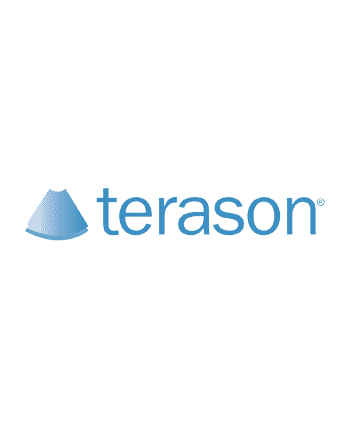AutoSCAN image optimization: This Philips CX50 feature automatically and continuously optimizes the brightness of the image at the default gain and TGC settings for the best image quality. It can be turned on and off as needed.
iSCAN intelligent optimization: This feature provides automatic one-button global image optimization on the Philips CX50 through AI adjustment of TGC, Doppler and receiver gain, compression curve, Doppler PRF, and Doppler baseline.
Advanced XRES adaptive image processing: This is an advanced real-time speckle reduction feature standard on the CX50 that also enhances edge definition.
SmartExam protocols: A step by step user-customizable set of protocols on the Philips CX50 that can help speed exams and increase consistency.
PureWave crystal technology: Philips version of the single crystal transducer technology that improves image quality on the CX50 at higher penetration. This makes it easier to diagnose difficult-to-scan patients.
Active native data: On the Philips CX50 this is a software tool that enables image processing, quick data re-acquisition, and image analysis with the same resolution and same frame rates of the original images. It is available in 2D mode, PW & CW Doppler, Color Doppler, and Physio. Active native data helps shorten exam duration, improves clinical workflow by post-processing, and reduces the time needed to keep the probe on the patient.
Live Compare: This feature of the CX50 allows the recall of current or previous exam image data for direct side-by-side comparison with current image data.
SonoCT: This is real-time compound imaging on the Philips CX50 that obtains multiple coplanar, tomographic images from different viewing angles, then combines them into a single compound image at real-time frame rates.
PureWave Crystal technology: A breakthrough single crystal technology on the CX50 that allows greater acoustic efficiency and bandwidth than piezoelectric (Ceramic) technology.
xMATRIX array technology: This is a unique 2D electronic array technology with fully-sampled elements that allow 2D, Live volume, and Live xPlane imaging, applicable to 3D live echocardiography that requires ultra-fast frame rate and calculation capability.
Live xPlane: An advanced feature of xMatrix transducers that allows for 4D data sets to be captured and images of multiple planes to be displayed in real-time on the CX50.
Live 3D TEE: This feature available on Philips CX50 X7-2t TEE transducer, providing a live maximum 90° by 90° Live 3D TEE volume image. It shows the full view of the left ventricle (not available with transthoracic echo) and provides more perspectives for planning. These views are not available during surgery. The Live 3D TEE provides the 3D heart view while it’s beating to assess function. The 3D data can be sliced for multiple 2D images, providing incremental details of structural defects in the valves and leaflets.
QLAB 3DQ GI: This QLAB tool on the Philips CX50 allows viewing, quantification, cropping, rotation, and measurements of 3D image data set.
QLAB IMT: This CX50 QLAB tool makes measurement of intima-media thickness in carotids and superficial vessels quick and consistent.
QLAB MVI: MicroVascular Imaging on the Philips CX50 maps contrast agent progression, measuring frame-to-frame changes, suppressing background tissue, and capturing additional data that make it significantly easier to visualize the vessels.
QLAB ROI: A plugin within QLAB on the CX50 that uses contrast and 2D imaging to increase the consistency and reliability of acoustic measurements.













